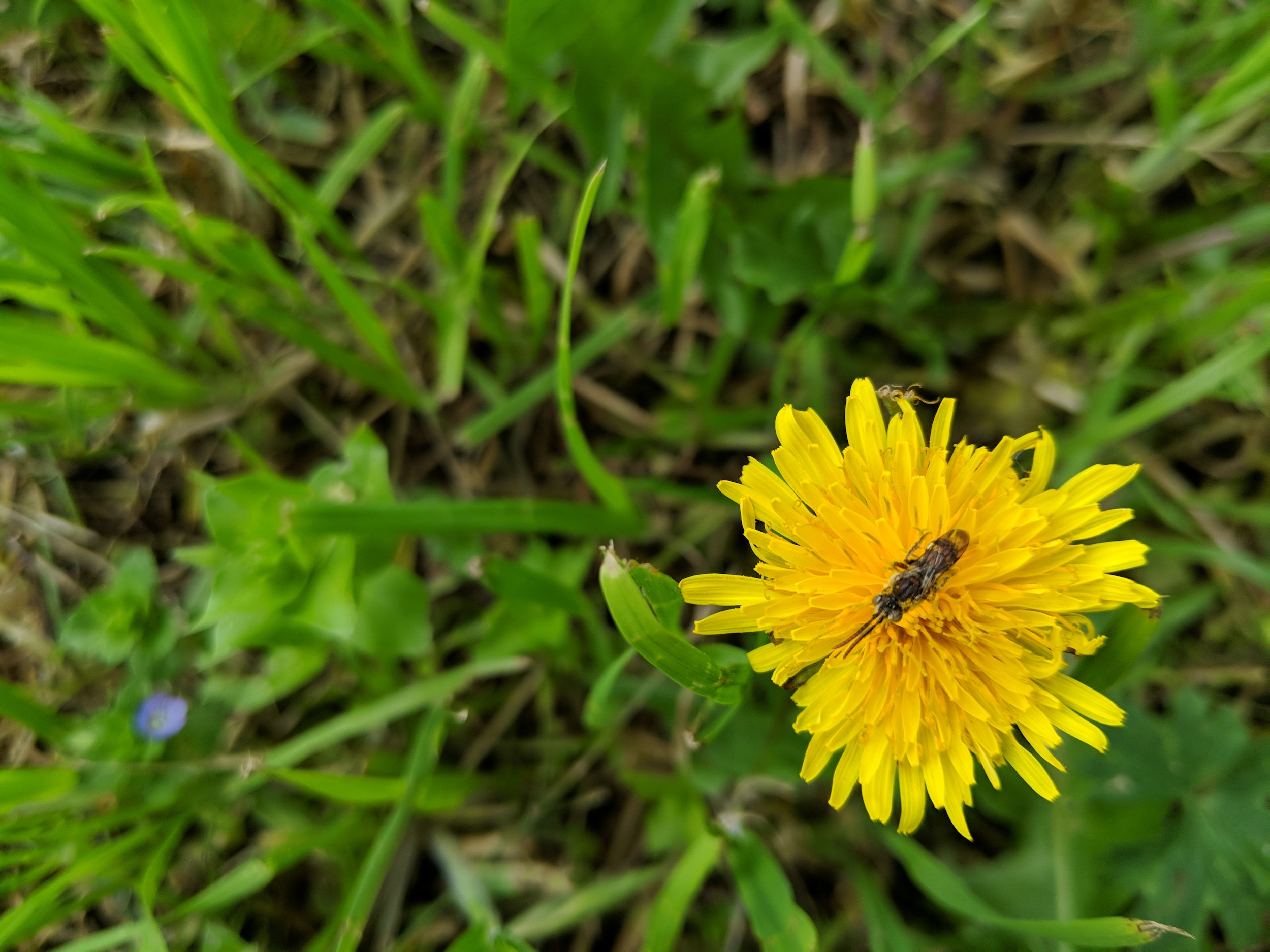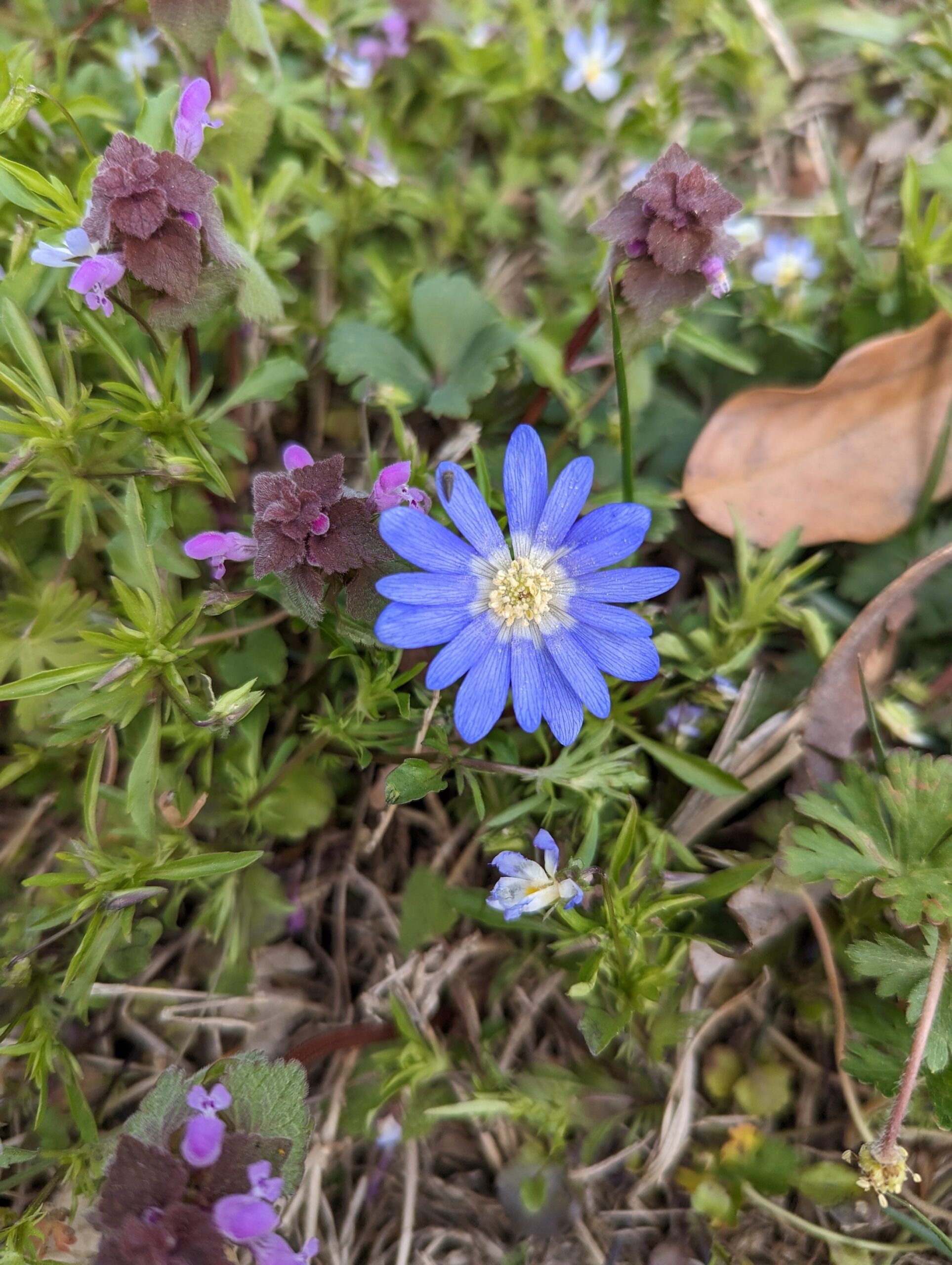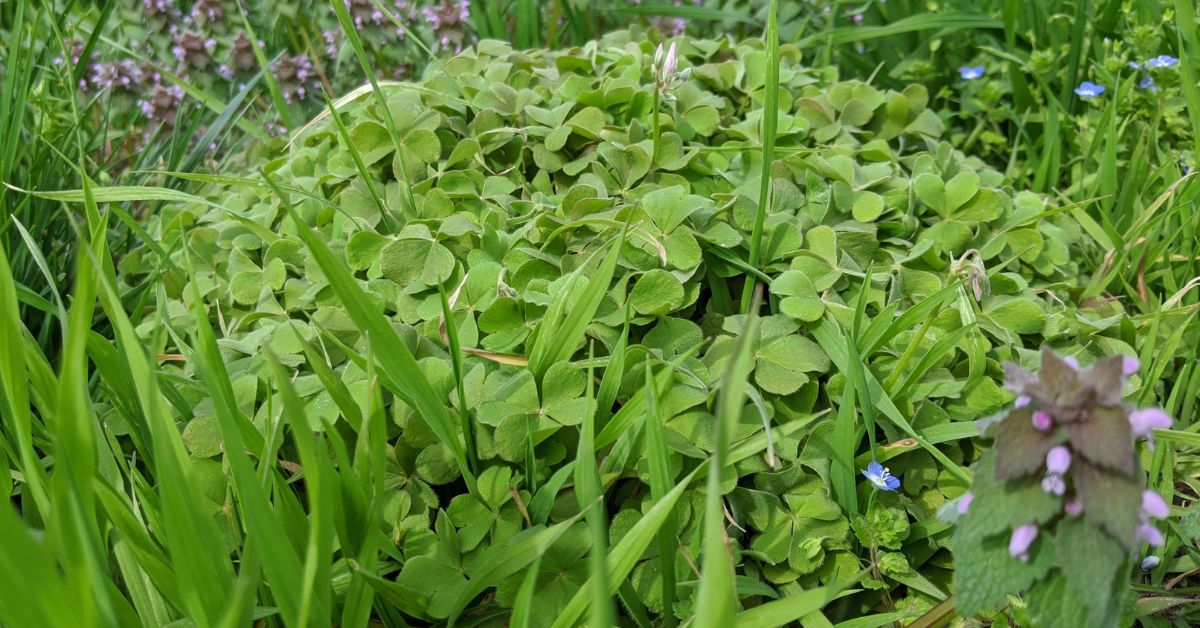Author: Lisa Trapp
Spring is officially here in Richmond and it seems like most of the chilly weather is behind us. The flowers are blooming and pollinators can be seen floating from plant to plant and humming through early garden blooms. With the gardens slowly waking up, there is also the undeniable pull and peer pressure from neighbors to get out the lawn mower and cut back the grass. For pollinator lovers though, there is a new approach to our spring maintenance tasks, that can let you leave your lawn mower parked for a bit longer. Let the grass grow… at least for a few weeks in the early spring.

“No Mow May” is an approach to lawn management that puts an emphasis on the needs of early emerging pollinators, rather than aesthetics. You may have also heard it referred to as “Low Mow May”, “No/Low Mow April” and “No/Low Mow Spring.” But what is it? And is it something everyone should participate in? No Mow May was originally popularized by a UK-based organization called Plantlife to create a collective approach to conserving pollinators. The premise is simple: Don’t mow in spring, allow flowers to bloom, and bees to flourish. But it’s worth noting that supporting our pollinators is a complicated endeavor, and it takes more of a concerted effort than simply ditching your lawnmower.
No Mow May became a movement here in the U.S. when a group of conservation-minded individuals in Appleton, Wisconsin formed a group called “pollenablers for Fox Cities.” In its first year, 300 people participated in the movement, with it picking up steam and engaging more than 400 participants in its second year. By its third year it had spread beyond Fox Valley, and today it is a nationwide movement.
Turfgrass in the U.S. spans 40.5 million acres, 65% of which occur in private yards. That is an enormous expanse that’s ecologically unavailable. Lawns are a huge problem for our pollinator friends, they effectively serve as “dead zones” or food deserts for many species. Most lawns are a monoculture, made up of turfgrass that doesn’t bloom or provide pollinators with food. Even for those species who can utilize lawn areas, most lawns are full of chemical fertilizers and herbicides, are frequently cut back, and are kept too short to provide realistic habitat.
Many of our pollinators, particularly bees, emerge from hibernation in the spring hungry and looking for food resources. Limiting mowing frequency will allow more food resources to bloom, and create more opportunity for pollinator success immediately after emerging. Decreasing mowing frequency or keeping grass longer doesn’t just benefit early spring bees though, there are several species of butterflies who need longer grasses as their host plants.
May is the month that worked best for emerging bees in Britain. But the U.S. is a diverse landscape with a range of temperatures and growing seasons. In some areas, delayed mowing might be best timed in late April, and in other areas, early May. The target is 3 – 4 weeks in early spring when our lawns are blooming but other native food sources haven’t appeared yet.

It should be noted that many of our early flowering lawn plants are nonnative species like dandelions (Taraxacum officinale). Some recent studies are suggesting that dandelions have allelopathic tendencies in their pollen. Bees that don’t use floral constancy may be spreading dandelion pollen, thereby reducing seed production from some of our native plants. It’s important to remember that there is currently no one right approach, and we often have to make decisions with the best information we have and what works best for our space.
But how do you know if No Mow May is a good fit? Delaying mowing for a few weeks in early spring has the biggest positive impact in urban and suburban spaces, in yards with a small to medium sized lawn. In addition, these yards must have more than just turfgrass. They’ll need to be accompanied by a diverse range of blooming flowers throughout the rest of the yard. Keep in mind, this is only one step of a greater approach. If you cut back in June after letting the yard grow and continue cutting for the rest of the season with no other food sources in your space, you are essentially inviting the bees in and then starving them after. To be truly effective, a diverse range of native food sources should be available and blooming by the time your lawn mower is pulled out 4 weeks later.
Many people don’t understand the no mow movement and find the unkempt appearance unacceptable. But these spaces can be curated in a way that makes them feel intentional. Consider incorporating aspects like borders, or signs that remind people you are still caring for the space.

No Mow May is not yard abandonment, and has very specific goals. It should be seen as the first step to greater habitat diversity and development. The goal is to have more native plants that bloom throughout the growing season, as well as protecting natural nesting sites like bare soil, standing stems, and leaf litter. Urban public landscapes, like the Low Line, need to balance the needs of the ecosystem with human usability of greenspaces. Though we do mow the lawn areas around our gardens, we also provide a range of food and living resources in the beds from April through November.
The bottom line? We encourage those with lawns to develop healthy and sustainable yard techniques whenever possible. Just remember that some bees travel a few yards and some travel miles. Your yard might not be able to provide everything for every pollinator, but we need as diverse of community habitats as the pollinators we are trying to save. If we all do our part, it adds up.
REFERENCES:
https://beecityusa.org/no-mow-may/
https://www.pubs.ext.vt.edu/content/dam/pubs_ext_vt_edu/ENTO/ENTO-151/ENTO-424.pdf
Xerces Society, No Mow May? No Mow April? Low Mow Spring? Webinar: https://www.youtube.com/watch?v=ihXAwIcBoJ4
https://www.xerces.org/blog/no-mow-may-gateway-to-better-landscape-management-for-bees


